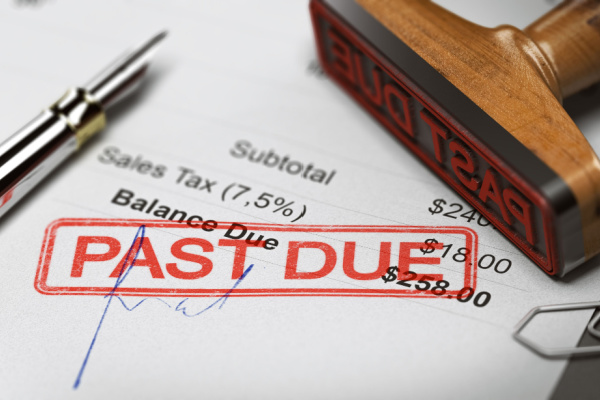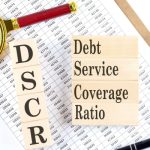Bad Debt – Provision, Example and How to Calculate It?

Bad debt is the amount of debt that cannot be recovered as the customer is unable to repay it. Therefore, entities record the same uncollectible amount as a bad debt.
What is Bad Debt?
A bad debt is a type of unforeseen expense for the creditor company. An entity may offer goods or services on credit to its customers. However, if customers delay or miss out on said payments, this payment is recorded as an expense in the company’s income statement.
There could be several reasons for missing out on the payments like financial difficulty, customers wilfully engaging in fraud, etc.
Key Takeaways
- Bad debt refers to debts that are unlikely to be repaid or have become uncollectible
- It typically arises when a borrower defaults on their loan payments or becomes insolvent.
- Bad debt can occur in any industry or sector where credit is extended, including banking, finance, and retail
- Bad debt can have significant consequences for lenders, including loss of revenue, decreased profitability, and damage to reputation
- Lenders typically take measures to manage bad debt, such as loan write-offs, debt restructuring, debt recovery through legal action, etc.
How Does Bad Debt Work?
Bad debt works in a simple yet detrimental way for lenders. When a borrower defaults on their loan payments or becomes insolvent, the lender may label the debt as bad debt. This means that the lender has deemed the debt uncollectible and is unlikely to be repaid. As a result, the lender may write off the debt, which reduces their profits and may impact their financial health. Alternatively, the lender may attempt to recover the debt through various means, such as legal action or debt restructuring. Managing bad debt is crucial for lenders, as it can have significant consequences for their business.
Why Does Bad Debt Occur?
- Bad debt occurs when a borrower is unable to repay his/her loans or becomes insolvent
- Economic factors, such as recessions or high inflation, can increase the likelihood of bad debt
- Lack of corporate governance or fraudulent activities by borrowers can also contribute to bad debt
- Lenders may also be responsible for bad debt if they fail to conduct proper due diligence or provide credit to high-risk borrowers
Bad Debt Example
Let’s suppose Company 1, a manufacturer of knives, delivers a shipment to a retailer after receiving an advance. The retailer promises to make the balance payment within 50 days. Company 1 records the due payment as accounts receivable on its balance sheet.
However, after the end of 50 days, the retailer doesn’t make the payment and eventually becomes untraceable. So, when Company 1 gets convinced that it will not be able to recover the dues after multiple attempts, it considers it as a bad debt.
What is Provision for Bad Debt?
Bad debt provision refers to an amount of money set aside by lenders, such as banks or financial institutions, to cover potential losses. Bad debt in accounting practice that involves estimating the likelihood of default by borrowers and calculating the potential loss that may arise. By setting aside a provision for bad debt, lenders can manage the risk associated with lending and ensure that they have sufficient funds to cover losses. The amount of bad debt provision can vary depending on the lender’s risk appetite and the overall economic conditions.
Why is Bad Debt Provisioning Important?
Bad debt provisioning is important for lenders to manage the risk of lending and ensure they have sufficient funds to cover losses. By setting aside a provision for bad debt, lenders can protect their financial health and maintain their capital adequacy. Bad debt provisioning also enables lenders to accurately report their financial performance and comply with accounting standards.
How to Calculate Bad Debt Expenses?
1. Direct Write-off Method
In this method, you need to write off the debt directly to the accounts receivable. Upon that, your company’s bad debt account is debited and accounts receivable are credited. However, the direct write-off method does not follow the matching principle for accrual accounting.
Per this principle, individuals must record an expense during the transaction and not when the payment is made. If you follow this method, there is no formula required to calculate the bad debt as the actual value of the bad debts is recorded in the book of accounts as an expense.
2. Allowance Method
The allowance method is ideal when a substantial amount of bad debt money is involved. In this method, a company anticipates the emergence of bad debts and prepares accordingly for the situation.
To put the allowance method into practice, you must create an allowance for doubtful accounts. This is a contra-asset account, which reduces the loans receivable when you list both these accounts on the balance sheet. Upon making a sale, you should estimate bad debt and debit the same to the bad debt expense account. This sum will get credited towards the allowance for doubtful accounts. When you wish to write off this debt, you need to debit your allowance for the doubtful accounts and credit the accounts receivables.
How to Estimate Bad Debt Expenses?
1. Accounts Receivables Ageing Method
Accounts Receivables Ageing method involves grouping receivable accounts depending on their age and then assigning a percentage on the likelihood of payment collection. This allocated percentage depends on the previous history of payment collections.
This percentage is then multiplied by the overall range of accounts receivables in the date range. The values are then added together to form the bad debt expense estimate.
2. Percentage of Sales Method
Percentage of sales method simply considers a period’s total sales and multiplies the value by a percentage. In this case too, the percentage depends on the company’s history of payment collection.
How to Report Bad Debt?
1. Reporting for Write-off Method
Write-off is the traditional method adopted by companies to report a specific bad debt. Under this method, managers write off bad debts against specific receivable accounts. A particular amount from that customer’s account is recorded as a bad debt expense.
However, there can be issues like misreporting of income between corresponding accounting periods. Hence, companies can write off bad debts only for immaterial amounts. When recording the bad debt in the book of accounts, the bad debt expense has to be treated as a debit item, and the corresponding accounts receivable will be a credit item.
2. Reporting for Allowance Method
Under this method, companies estimate their bad debts for a particular financial year and record them in a separate account. This separate account is called allowance for doubtful accounts.
It is only a prediction or estimation of bad debts out of the total receivables for the year. You can use the percentage sales or receivables ageing method to estimate bad debts for the year. During the journal entry, the bad debt expense account is debited, and allowance for doubtful accounts is credited.
When these predictions or estimations indeed become a bad debt, another journal entry is passed, which debits allowance for doubtful accounts and credits the receivable account.
Also Read
What is the Treatment of Bad Debt as per Accounting Standards?
You need to create a provision for bad debt by debiting the bad debt expense account and crediting the accounts receivable. Moreover, according to Accounting Standard 29 “Provisions, Contingent Liabilities and Assets”, you, as an assessee, must keep an account of the provisions that occur during the regular course of your business.
Nonetheless, since the Income Tax department sometimes disallows these provisions, it leads to a difference in timing between the books of accounts and accounting books as per IT Act.
Thus, you will also have to create deferred assets or liabilities accordingly. Consider going down this route only when the timing difference in a transaction is temporary.
What is the Significance of Bad Debt Expense?
Similar to other accounting principles, a bad debt expense allows a company to report its financial position accurately. When you are running a business, you might come across certain situations where a customer will refuse payment, leading you to create a bad debt expense. However, a substantial appearance of bad debt can disrupt your company’s financial health.
Thus, it is crucial for you to accurately time your company’s bad debts. Further, recording such instances will help you avoid similar situations in the future.
Moreover, bad debt expenses feature tax implications. Reporting a bad debt will increase your expenses and decrease net income. Thus, the amount of bad debt you report during a year will impact the tax amount for that period.
Good Debt vs Bad Debt
Here are some differences between the two types of debts:
| Parameter | Good debt | Bad debt |
| Investment | You can consider expenses incurred on good debts as an investment | You cannot consider bad debts as an investment as it doesn’t have any future value |
| Future outlook | Individuals use this to finance those goods or services which will provide some value in future | Borrowers use bad debts to finance their consumption requirements |
| Examples | Education loans, home loan | Credit card loans, Car loans |
What to Know While Dealing with Bad Debt Expenses?
- The first step in dealing with bad debt expenses is to identify the bad debt
- Lenders may also attempt to recover the debt through legal action or debt restructuring
- Lenders may also implement stricter credit policies and conduct proper due diligence to minimise the risk of bad debt
- Bad debt expenses can be managed through effective risk management strategies and regular monitoring of loan portfolios
- Lenders may also set aside a provision for bad debt to cover potential losses and manage their financial health
- Companies can also avail of a trade credit insurance policy where the insurer would compensate with a said sum to protect its cash flow
Final Word
Bad debt could be significantly problematic to lenders, companies and borrowers alike. While lenders and companies could face major financial and reputational problems, bad debt could also be substantially damaging to the financial health of borrowers. While lenders and companies should deploy adequate risk management measures to minimise the possibility of bad debt, borrowers should plan their repayments before taking a loan.
That said, if you’re looking for urgent cash, you may consider an instant Navi Cash Loan up to ₹20 lakh starting at just 9.9% p.a. Download the Navi app to check your loan eligibility today!
FAQs
After writing off bad debt and considering it unrecoverable, you can still recover it from a bankruptcy trustee or a debtor who has decided to make a settlement. However, you might be able to clear off the debt at a much lower amount. Note that in this situation, the payment will be partial.
According to Section 36(1)(viia) of the Income Tax Act, only financial institutions and banks are allowed to create deductions pertaining to provisions of bad debt. No other assessee is eligible to claim such deduction on bad debt provision. Additionally, the deduction limit can vary from one bank to another.
If your business was already discontinued before the start of the accounting year, you would not be eligible to claim bad debt as a deduction from the company’s profit. According to Section 36(2)(iii) of the IT act, if a bad debt is already written off, it is not allowed to be a deduction on the grounds that there are still possibilities for recovery.
The tax that arises from timing differences in accounting is called deferred tax. In simple terms, it refers to taxes that are postponed to a certain date in the future. Deferred tax takes into account all timing differences, both permanent and temporary.
The timing difference is the interval between the reporting of pre-tax book income and actual taxable income. It can either be temporary or permanent. Temporary timing difference is reversible in the short term. Meanwhile, you cannot reverse permanent timing differences in the long term.
Bad debt is a liability, as it represents money owed by customers who are unlikely to pay. It negatively impacts a company’s financial health and cash flow.
Disclaimer
This article is solely for educational purposes. Navi doesn't take any responsibility for the information or claims made in the blog.

Customer’s Feedback
No comments found.Types of Fixed Deposit in 2023 – Know Different Types of FDs and How to Choose
Fixed deposits (FDs) are a popular investment option offered by banks and other financial instituti... Read More »10 Best National Pension Schemes (NPS) in India in April 2023
National Pension Scheme (NPS) is a retirement benefits scheme launched by the Government of India f... Read More »National Pension Scheme (NPS) – How to Open NPS Account?
National Pension Scheme or NPS is a voluntary contribution-based retirement benefits scheme introdu... Read More »How to Open an NPS Account Online and Offline?
National Pension Scheme The National Pension Scheme (NPS) is a voluntary retirement savings sche... Read More »Mahila Samman Savings Certificate Scheme -Interest Rate, Benefits and Eligibility
The Mahila Samman Savings Certificates, a fixed-income investment programme explicitly launched for... Read More »What is a Tax Saving FD – Interest Rates, Benefits, Features and Calculation
Did you know that tax-saving FDs (fixed deposit) can help you save up to Rs.46,800 on taxes? Consid... Read More »What is Fixed Deposit – Best FD Interest Rates, Calculations and How to Apply Online
Fixed deposits (FDs) are known to offer guaranteed returns - one of the reasons why they are so pop... Read More »EPF Interest Rate 2023 – 8.15% FY 2022-23
The Employee Provident Fund (EPF) is a Government-backed retirement savings scheme directed towards... Read More »12 Best Investment Plans in India in April 2023 – Returns & Benefits
Working extra hard to earn money? Great! But, how about making your money work as well? Yes, we are... Read More »Sukanya Samriddhi Yojana: Bank Interest Rates and How to Open a SSY Account
Honourable Prime Minister Narendra Modi launched SSY (full form - Sukanya Samriddhi Yojana) as an i... Read More »Senior Citizen Savings Scheme (SCSS) – Interest Rate 2023
The Senior Citizen Savings Scheme is a government savings scheme launched for the senior citizens o... Read More »List of GST State Codes and Jurisdiction 2023
What is the GST State Code? GST state code is the first two digits of the number on the GS... Read More »Top 10 Chit Fund Schemes in India in 2023
Chit funds are one of the most popular return-generating saving schemes in India. It is a financial... Read More »10 Best Gold ETFs in India to Invest in April 2023
Gold ETFs or Gold Exchange Traded Funds are passively managed funds that track the price of physica... Read More »10 Best Demat Accounts in India for Beginners in 2023
Creation of Demat accounts revolutionised the way trades were conducted at the stock exchanges. It... Read More »20 Best Index Funds to Invest in India in April 2023
What is an Index Fund? An index fund is a type of mutual fund or exchange-traded fund (ETF) that... Read More »Best Arbitrage Mutual Funds to Invest in India in April 2023
Arbitrage funds are hybrid mutual fund schemes that aim to make low-risk profits by buying and sell... Read More »10 Best SIP Plans in India to Invest in April 2023
What is SIP? SIP or Systematic Investment Plan is a method of investing a fixed amount in ... Read More »10 Best Corporate Bond Funds in India to Invest in April 2023
Corporate bond funds are debt funds that invest at least 80% of the investment corpus in companies ... Read More »10 Best Bank for Savings Account in India [Highest Interest Rate 2023]
Savings account is a type of financial instrument offered by several banks. It lets you safely depo... Read More »
































